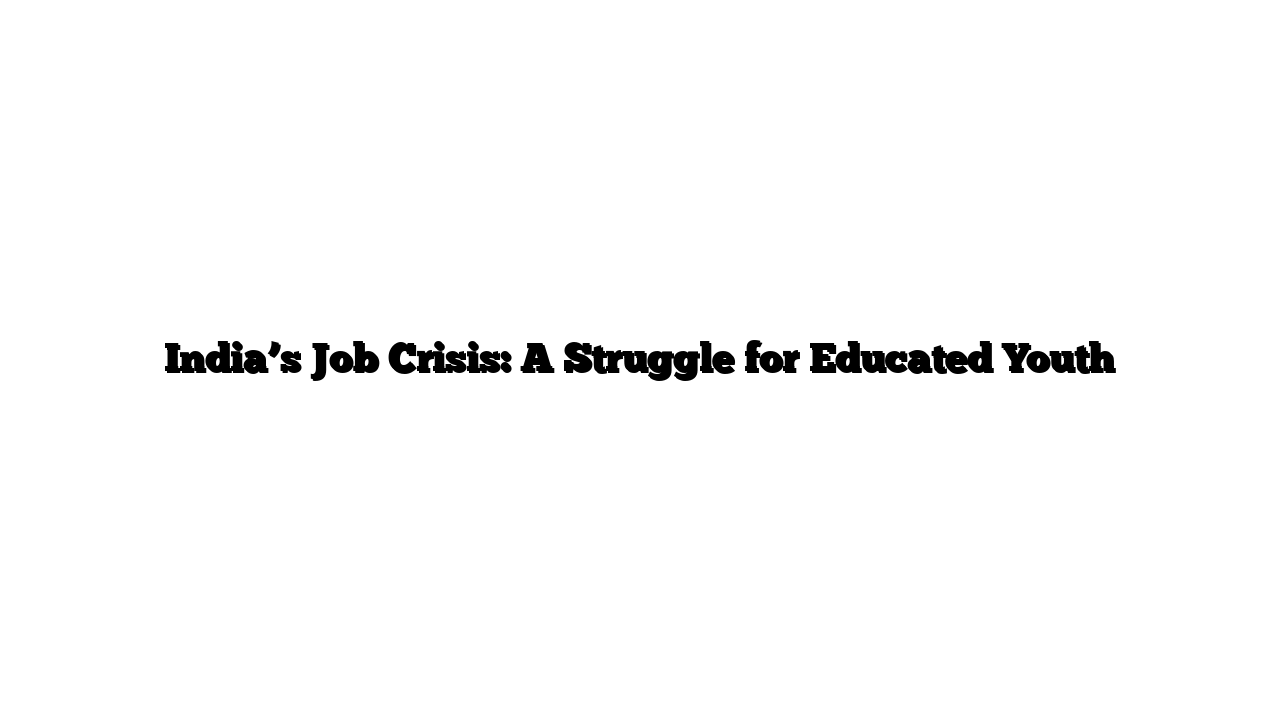India, the world’s fastest-growing major economy, faces a stark reality: despite impressive growth figures, the country isn’t creating enough jobs for its expanding population. With a booming working-age demographic, India should be riding high on a demographic dividend, but instead, it’s struggling to provide employment opportunities. As the number of job seekers increases, the actual job openings remain limited, especially for the country’s educated youth.
The Growing Job Crisis
Chandan Kumar, a 29-year-old university graduate, has been seeking full-time employment for over a decade but has yet to find a stable job. Despite his degree, he survives by delivering food. He is not alone. More than half of India’s population is under 30, a demographic advantage over countries like China and Japan. However, this youth bulge is struggling to find work. Unemployment for those aged 20-24 has surged to over 42%, which paints a grim picture of the country’s labor market.
The Informal Economy’s Burden
When formal sector jobs remain elusive, many, like Kumar, turn to the informal sector, where work often lacks stability, salaries, and benefits. This “black economy” is vast, employing nearly 90% of India’s workforce, with people working in agriculture, construction, and other low-skill roles. Of the 112 million jobs created in India over the past decade, only about 10% were in the formal sector. This reflects a bigger issue: India’s labor force participation rate is lagging behind other nations, particularly its competitors in the global market.
Lack of Private Investment
One major roadblock is the continued weakness in private investment. Without substantial private sector involvement, India struggles to create the high-quality jobs needed for its growing workforce. Despite the country’s rising pool of educated youth seeking better job opportunities, the education system is failing to provide the necessary skills.
The Education System’s Shortcomings
India’s education system, particularly higher education, plays a crucial role in this mismatch. While millions graduate with degrees and diplomas, many find themselves unprepared for the job market. Outdated curriculums, untrained faculty, and a focus on rote learning leave students without the practical skills needed by employers.
Worse still, the unemployed youth often turn to higher studies or join family businesses like farming in a bid to stay afloat, leading to an educational disconnect between what is taught and what is needed in the labor market.
The Gender Divide in the Workforce
Things are especially bleak for women. Although gender parity in tertiary education enrollment is relatively balanced, with about 52% male and 48% female students, the situation changes drastically in the labor market. India’s female labor force participation is one of the lowest in the world, primarily due to societal expectations that women serve as caregivers at home. Addressing this gap could boost India’s GDP by nearly a third by 2050, according to some estimates.
Political Ramifications
India’s employment crisis also carries significant political consequences. In the national elections, a failure to meet job creation promises played a role in Prime Minister Narendra Modi’s Bharatiya Janata Party (BJP) losing its parliamentary majority for the first time in a decade. Regions with high levels of tertiary education enrollment, like Uttar Pradesh, saw voters disappointed with the actual labor market outcomes.
Manufacturing vs. Services: A Missed Opportunity
Modi’s government had ambitious plans for the manufacturing sector, aiming for it to contribute 25% to India’s GDP. However, this goal remains unmet. The shift from agriculture directly to services has left manufacturing behind, and while companies like Foxconn have invested in India, many other large firms have hesitated. Smaller businesses struggle with red tape and limited access to capital, making it harder for them to expand and fill the gap left by large companies.
India’s Global Ambitions at Risk
India’s failure to generate enough jobs could hurt its global standing. With per capita income already more than $10,000 lower than the world average, the country risks falling behind in its quest to become a developed economy by 2047. A widening wealth gap between the rich and poor could further exacerbate social divides, particularly in a country with some of the world’s richest people.
Modi’s Measures: Are They Enough?
In response to these challenges, the government has proposed measures in the national budget, including incentives for the manufacturing sector and a five-year training program to skill 2 million people. However, experts argue that these policies are not enough. To create the volume of jobs needed, India must attract large industries, strengthen exports, and make labor laws simpler.
The Path Forward
India’s labor market remains deeply flawed, with a mismatch between the skills its youth acquire and what the job market demands. If the government and private sector can collaborate to generate high-quality employment and make the labor market more inclusive, India could unlock the potential of its youth bulge and pave the way for a brighter future. But without this transformation, the gap between India’s growing economy and its struggling job market will continue to widen, hindering the country’s development goals.
